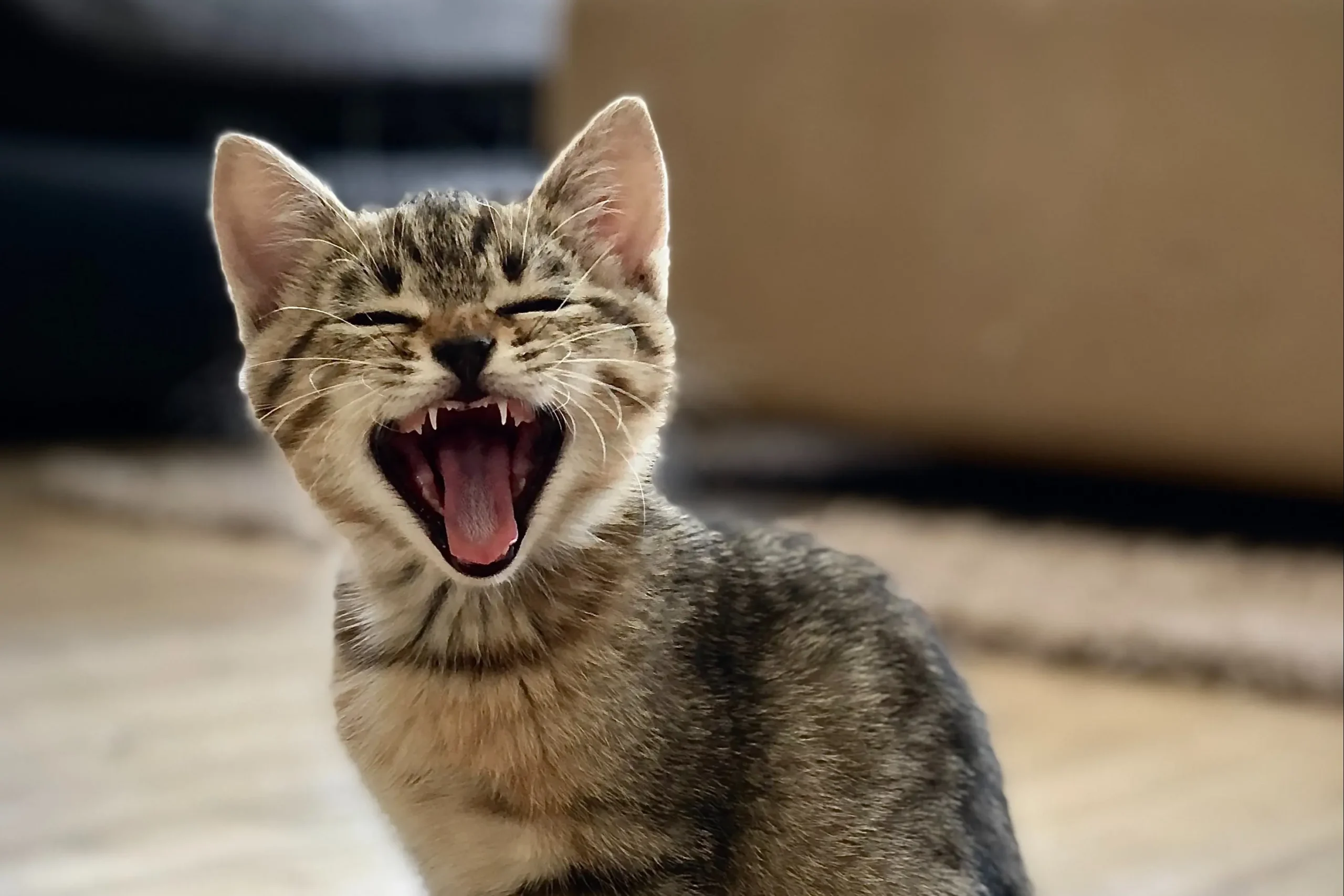Cats are tiny, adorable enigmas. One second, they’re purring in your lap like the picture of sweetness, and the next, CHOMP, they’ve turned your hand into a chew toy. If you’ve ever sat there staring at your bite marks wondering, “Why, Whiskers, why?”, you’re not alone. Cats don’t bite just for fun—they’re trying to tell us something, even if their methods could use a little finesse.
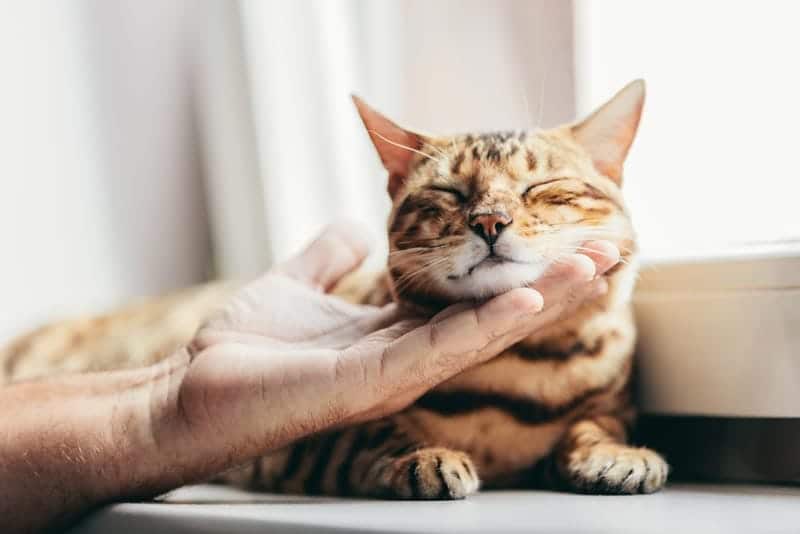
When my cat Luna decided my ankles were her personal stress balls, I took it as a challenge to figure her out. Spoiler alert: cats bite for reasons, not revenge (even though it feels like revenge when you’re the target). Once I cracked the code on Luna’s chomp-happy behavior, peace—and my ankles—were restored.
Here’s the deal: cats are communicators, and biting is just another way they express themselves. So let’s break down the most common reasons for those surprise nibbles and how to gently show your feline friend that your hands are not for chomping.
1. Play Biting: The “I’m Hunting Prey” Chomp
Cats are natural-born hunters, and when they play, they tap into those wild instincts. Fingers, toes, and even dangling hoodie strings become irresistible targets. While it’s all fun and games for them, it’s a little less fun when your hand becomes the prey.

Why They Do It:
- They’re practicing their hunting skills.
- Wiggling fingers and toes look a lot like prey (at least to your cat).
How to Stop It:
- No Hands in Playtime: Use wand toys, laser pointers, or stuffed mice to let them hunt safely.
- Redirect the Energy: If they go for your fingers, swap in a toy instead. Show them that toys, not skin, are for chomping.

Luna’s Version: She used to pounce on my toes while I worked, her little meow signaling, “Your feet moved. They must die.” A feather wand changed her focus—and saved my socks.
2. Overstimulation: The “I’ve Had Enough” Nip
Cats have a love/hate relationship with pets. One second, they’re soaking up the affection, purring away, and then—CHOMP!—they bite like you’ve betrayed them. This is classic overstimulation, where their sensory threshold goes from “more, please” to “STOP NOW” in a flash.
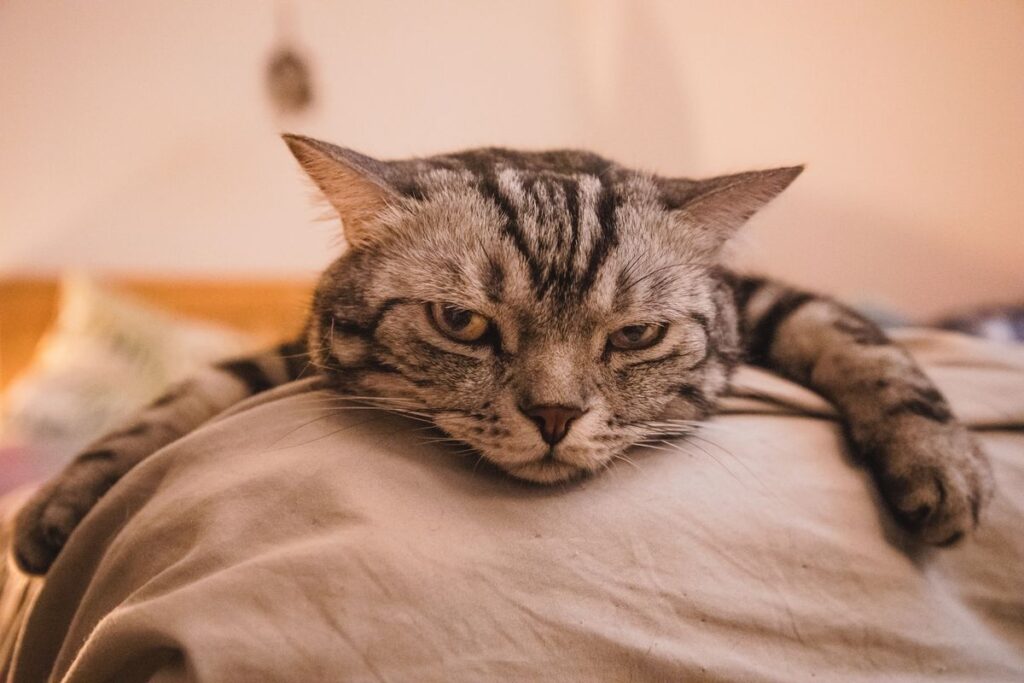
Why They Do It:
- Cats have sensitive nerve endings, and too much petting can become overwhelming.
- They’re not mad, just overstimulated.
How to Stop It:
- Watch for Warning Signs: Flattened ears, a twitching tail, or dilated pupils mean “back off.”
- Short and Sweet Pets: Stick to their favorite spots (head, cheeks, chin) and keep sessions brief.
- Respect Their Limits: If they bite, stop immediately—no punishment, just a time-out.
Luna’s Petting Rules: She’s a “three chin scratches and done” kind of gal. Anything beyond that? Cue the nibble. Now, I watch her tail—it’s like her personal mood ring.
3. Fear or Stress: The Defensive Bite
Imagine you’re in a new, loud environment or someone you don’t know gets too close—what do you do? Well, if you’re a cat, you might bite. Cats often lash out when they feel scared or cornered, even if they don’t mean to hurt anyone.

Why They Do It:
- They feel threatened or overwhelmed.
- Sudden movements or unfamiliar people can trigger fear responses.
How to Stop It:
- Create a Safe Space: Give them a quiet area with their favorite blanket or hiding spot.
- Introduce New Things Slowly: Let them explore new people, pets, or environments at their own pace.
- Stay Calm: Your energy matters. Speak softly and avoid sudden movements.

Luna vs. the Vacuum: When I first turned on the vacuum, Luna turned into a ninja, biting the hose in self-defense. Now, I move her to her “safe room” before cleaning. Peace restored.
4. Pain or Discomfort: The “Help Me” Bite
Cats are stoic creatures, but if they’re hurting, they might use biting as a way to tell you. Whether it’s dental pain, an injury, or even arthritis, biting could be their SOS.

Why They Do It:
- They’re in pain and can’t explain it any other way.
- Touching a sore spot might trigger a defensive bite.
How to Stop It:
- Check for Signs: Limping, hiding, or sensitivity to touch could mean something’s wrong.
- Visit the Vet: Always rule out medical issues if your cat starts biting out of the blue.
- Handle with Care: Be gentle when picking them up or petting them.
Luna’s Toothache: One day, she bit me when I scratched her chin—her favorite spot. A vet visit revealed a dental issue. After treatment, her sweet chin-scratch purrs returned.
5. Attention-Seeking: The “Notice Me!” Bite
Some cats are like toddlers—if they don’t get attention, they find a way to demand it. For some, that means biting your hand, arm, or even your laptop.

Why They Do It:
- They’re bored or want to play.
- They’ve learned that biting gets your attention, even if it’s negative.
How to Stop It:
- Ignore the Bites: Don’t reinforce the behavior by giving them attention (even scolding counts as attention).
- Redirect to Toys: Give them something productive to chew or chase.
- Stick to a Routine: Regular play and cuddle times can curb boredom.
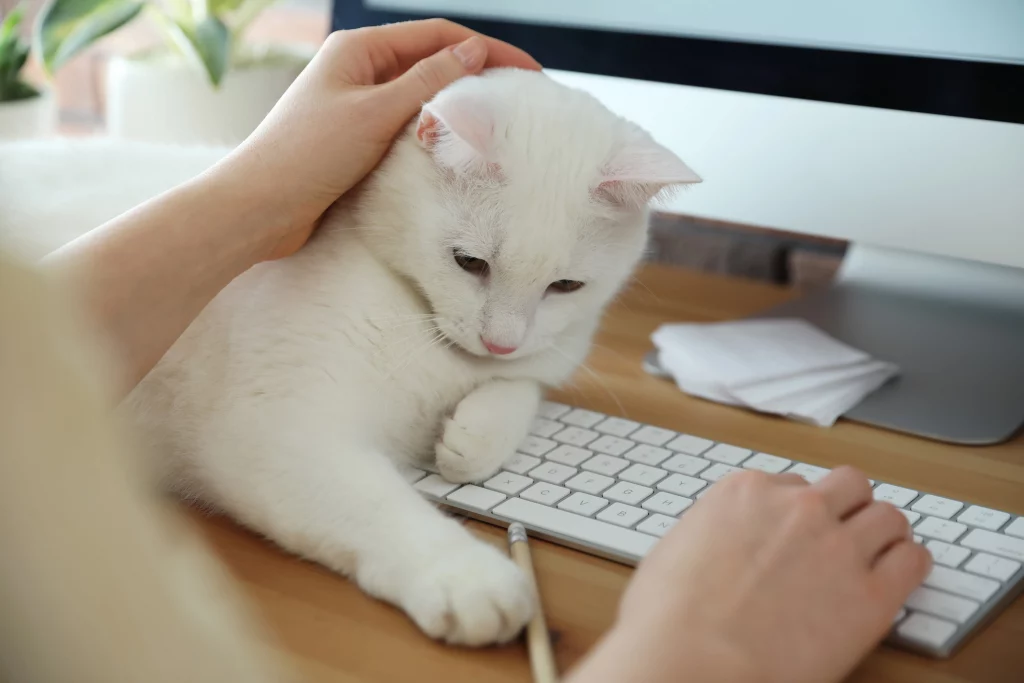
Luna’s Drama Queen Moment: If I spend too long working, she bites my sleeve to remind me of her existence. Now I give her attention before she resorts to her teeth.
6. Kittens and Teething: The “I’m Just a Baby” Nibble
Kittens are basically tiny, toothy toddlers going through a teething phase. Biting is their way of exploring and soothing their gums.

Why They Do It:
- Their gums hurt as new teeth come in.
- Everything is a toy—including your fingers.
How to Stop It:
- Chew Toys to the Rescue: Soft, kitten-safe toys are perfect for relieving gum pain.
- Set Boundaries Early: Teach them that hands are not toys from the start.
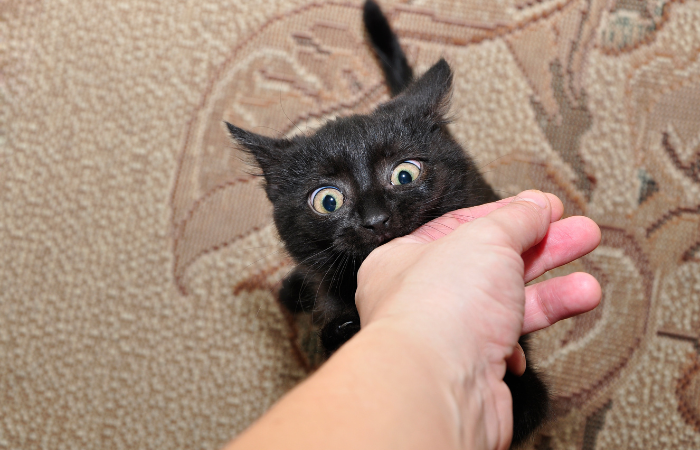
Luna’s Kitten Phase: She once gnawed on my phone case like it was a teething ring. A rubber chew toy saved my electronics—and my hands.
Final Thoughts: Decode the Bite, Save Your Fingers
Cats bite for all kinds of reasons, but it’s never out of spite. Whether they’re overstimulated, scared, or just playing too hard, biting is how they communicate. The key is to understand what they’re trying to say and respond with patience, love, and a few clever strategies.

For Luna, a mix of toys, boundaries, and paying attention to her signals has made biting a rare occurrence. Now, when she nibbles, it’s usually her way of saying, “I love you… but don’t push it.”
What about your cat? Are they a playful biter or a boundary-setting nibbler? Share your stories and tips—I’d love to hear about your experiences with these bite-sized challenges! 🐾


